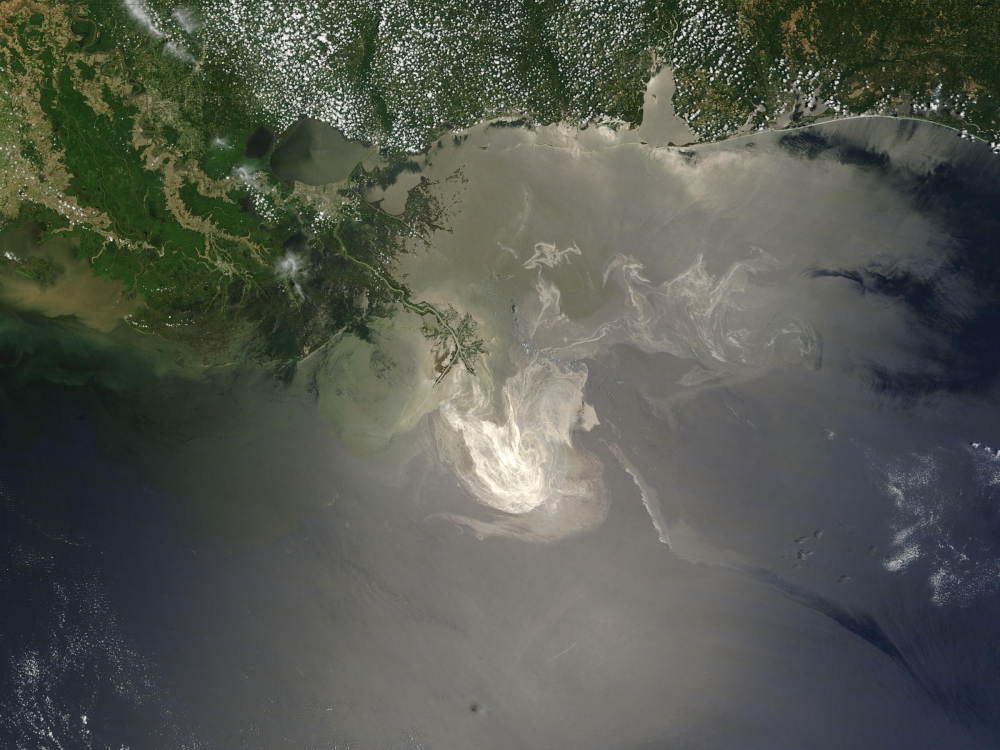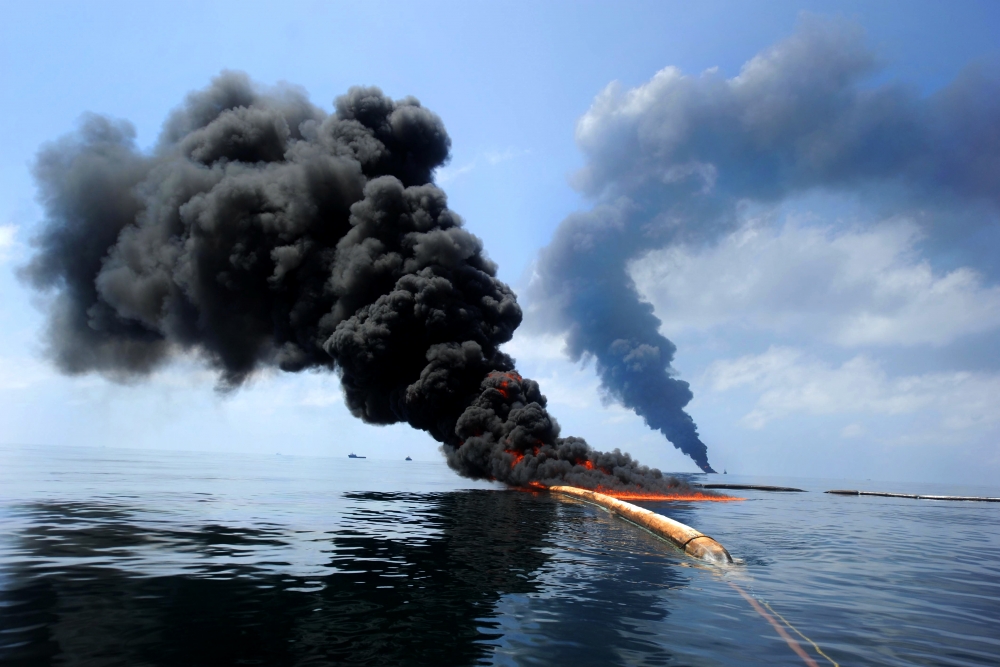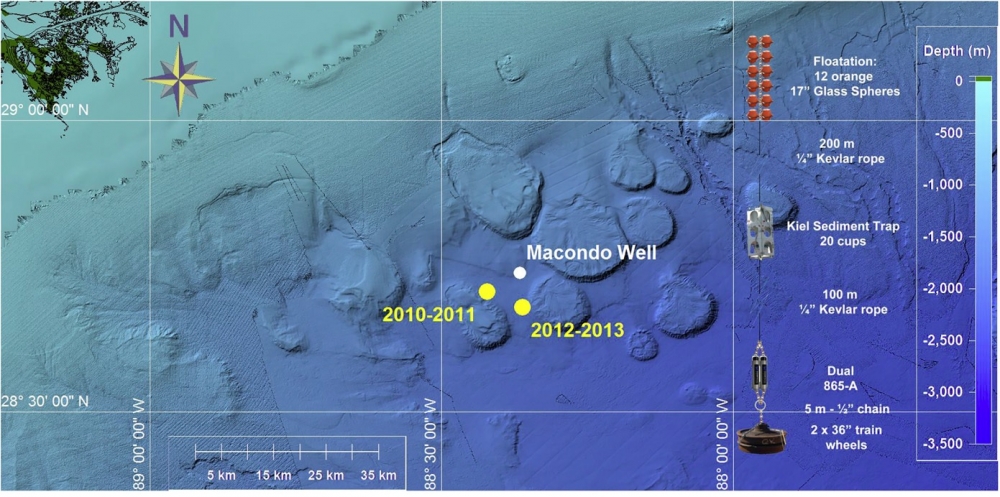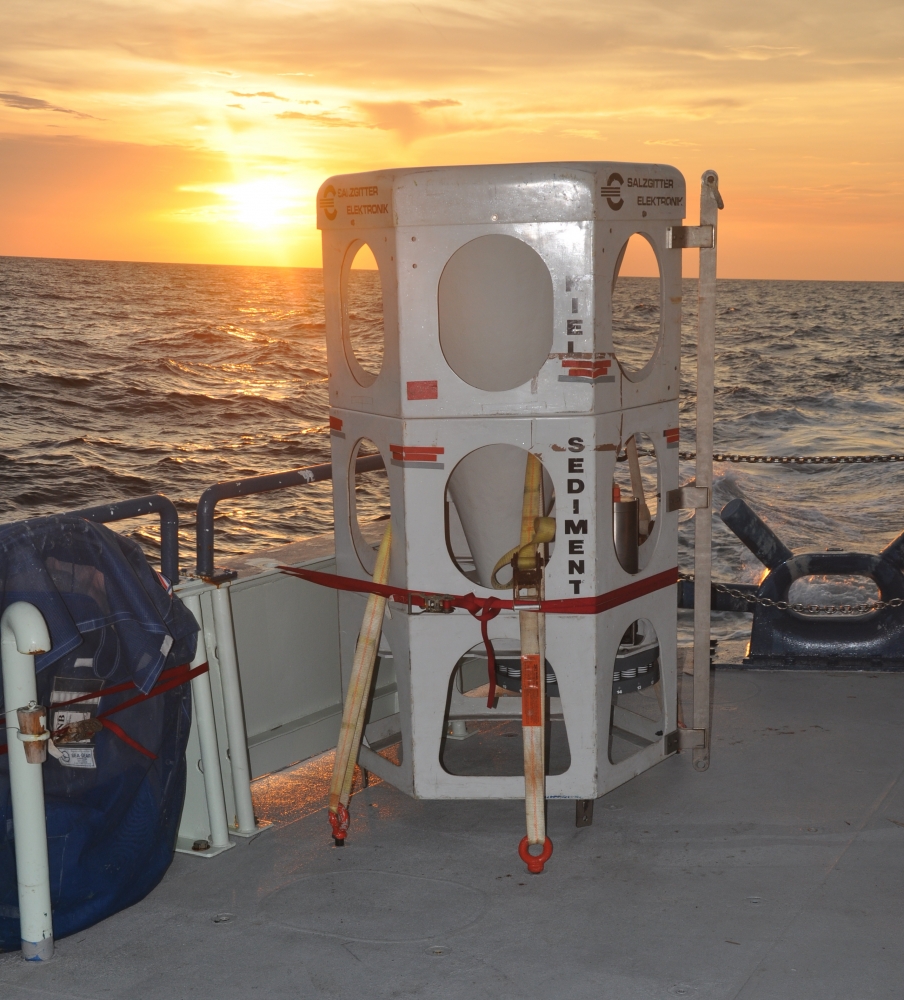The Dirty Blizzard

Between April 20 and July 15, 2010, millions of barrels of crude oil gushed into the Gulf of Mexico from a blown well beneath the Deepwater Horizon oil rig; it was the largest marine oil spill in U.S. history. Although the oil was undetectable in surface waters within a few weeks after the well was capped, oil was found in seafloor sediments for months thereafter. Because the mechanisms that transport petroleum hydrocarbons to the ocean floor are not well understood, the deeper environmental consequences were unclear.
A new study by UC Santa Barbara research oceanographer Uta Passow and other scientists working in the Gulf of Mexico has found that contaminants from the oil spill lingered in the subsurface water for months after oil on the surface had been swept up or dispersed. The investigators also detailed how remnants of the oil, black carbon from burning oil slicks and contaminants from drilling mud combined with microscopic algae and other marine debris to descend in a “dirty blizzard” to the seafloor. Their findings appear in the Proceedings of the National Academy of Sciences.
“This sedimentation is primarily due to marine snow — so-called dust bunnies of the ocean — composed of tiny phytoplankton, zooplankton feces, mucus and other debris that sinks and carries with it suspended or dissolved substances,” explained co-lead author Passow of the Marine Science Institute.
The researchers used fine sediment traps deployed 4.5 miles from the capped well to collect marine snow consisting of diatoms — a common type of algae — and other matter slowly sinking through the water. They found contaminants clinging to the tiny particles, including black carbon left over from burning oil slicks, as well as barium and olefin, compounds found in the drilling mud used in efforts to contain the leaking well. Finding barium and black carbon was a surprise, as scientists previously thought these quickly sank to the bottom after being released into the ocean.
“The traps collected this material months after the leak was over,” Passow said. “The material stays in the water much longer than people think.” And because drilling mud and oil are present whenever drilling is going on, contaminants could be winding up on the bottom in other situations as well, she noted.
Some researchers have contended that contaminants found on the seafloor come from natural oil seeps. But Passow and colleagues used various “fingerprinting” techniques to confirm the hydrocarbons in the sediment traps were derived from the spilled oil. The presence of barium and the distribution of olefin compounds — two key components in drilling mud — confirmed the contaminants were associated with the spill.
“It’s kind of like a smoking gun that pins down the source,” said co-lead author BeizhanYan, an environmental chemist at Columbia University’s Lamont-Doherty Earth Observatory in Palisades, New York.
Using data collected between August 2010 and October 2011, the team constructed a time series of petrochemical sedimentation following the spill. They found that black carbon continued to sink for two months after the fires were extinguished, and other contaminants such as bioactive barium from the drilling fluid sank for some five months. (Many of the fires were deliberately set to remove the oil.)
Sinking of these contaminants is negligible, until they are captured by marine snow, which provides the vehicle for downward transport. An exceptionally large bloom of diatoms that occurred in August and September 2010 provided such marine snow and in turn allowed the movement of contaminants from the water column to the seafloor. The formation of sinking marine snow also was enhanced by the presence of the oil products, but it remains unclear whether the oil itself played a role in precipitating the bloom.
The work helps explain how contaminants from the spill that were dispersed in the water were concentrated at the seafloor, where they entered the food web, affecting fish and corals in deep waters. “People in the past have not really ever considered oil reaching the seafloor, especially in very, very deep areas,” Passow said. “We now know how the oil gets down there in large amounts and affects the communities that live there.”
These results may prove helpful in planning future responses to spills, measuring their impact and containing damage to the environment and associated food systems, thereby ensuring food safety. Through a consortium of scientists and research institutions called the Ecosystem Impacts of Oil and Gas Inputs to the Gulf project, the team is currently studying what happens to the oil seeping naturally in the gulf.







